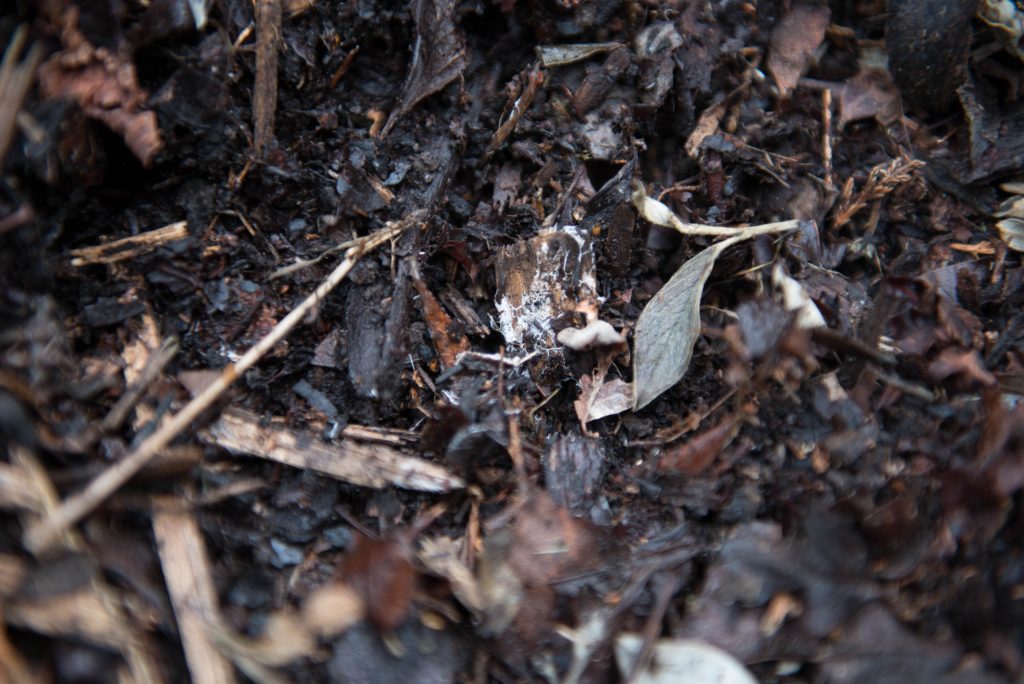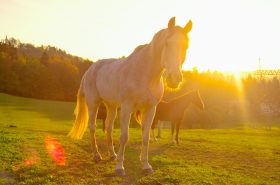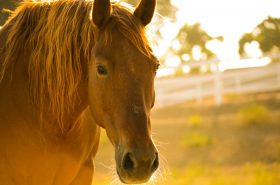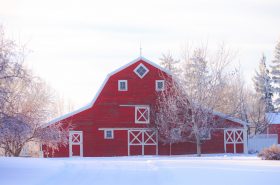Composting is the process of decomposing organic material to be used to fertilize soil.
This organic material includes grass clippings, leaves, vegetable food scraps, newspaper, cardboard, and vegetarian animal manure.
Manure management on horse farms is an important part of farm operation. If left in a pile manure will decompose on it’s own but could take years. One way to speed up the process, and take advantage of manure as fertilizer, is to compost the manure. Correct composting of manure requires moisture, air, appropriate C:N (carbon : nitrogen) ratios, temperature, and choosing the best system for your set-up.
Sufficient water provides soluble nutrients for the microbes necessary for composting. In most cases a moisture content of 45-55% will result in efficient breakdown of the organic material. Moisture is continuously lost by evaporation so depending on your geographic location the amount of water added to ensure proper composting will vary. A consistent moisture content is incredibly important to avoid the decomposing of organic material from shutting down prematurely.

Microbes require oxygen to break down the organic materials. If the compost pile gets too compacted a lack of oxygen will turn the pile anaerobic. To avoid this the horse manure should be mixed with bulk materials, such as straw, leaves or hay, and/or lawn clippings (all free of pesticides). A perforated PVC pipe can also be inserted into the center of the pile to allow air flow.
The C:N ratio is also an important factor in a composting system. Carbon is a main source of energy used by microbes. They also need nitrogen to form proteins. The challenge is to have the correct ratio of the two for successful composting. Carbon is found in bedding material, but too much bedding material mixed in with manure can slow the process. Lawn clippings and yard waste are high in Nitrogen so it’s important to add those to your compost pile as well. Nitrogen speeds up the composting process and improves the compost quality.
During decomposition heat is given off which creates an ideal environment for microorganisms to break down the organic material. The optimum temperature for this is between 130 – 150 degrees. Pathogens, weed seeds, and fly larvae will be destroyed at roughly 140 degrees. At temperatures above 160 degrees microorganisms will die which is why it’s essential to regulate the oxygen and temperature levels in your compost pile. Record the internal temperature by inserting a thermometer 2 feet down from the top into the side of your pile. Repeat this is several locations to get an average. When you create your compost pile you’ll want to record temperatures daily for the first week, then twice-weekly after that. Decreasing temperatures may indicate declining oxygen levels, less than optimal moisture content, and/or inadequate nitrogen levels for microbes. You can turn your compost pile every 4-5 weeks and begin recording temperatures again.
There are a large number of composting systems to research, ranging from custom bin systems for your large horse farm or ‘do-it-yourself’ systems if you have a smaller operation. The number of animals you have, the space and equipment you have available, and how intensely you plan to manage your compost pile are all factors that go into choosing a system. Composting your horse’s manure is a great option for waste management and results in an excellent fertilizer to use around your farm!
Love this post? We think you will like Recycling, Reusing, and Reducing at the Barn



